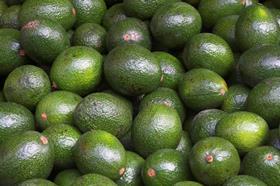
Avocado production volumes in New Zealand – Australia’s largest supplier of avocados over the Summer months – have slipped again this summer. Biannual growing patterns combined with a stormy weather event have caused a gap in the supply chain, with growers unable to pick and pack for a period in early January.
Prior to the new year, volumes out of New Zealand were predicted to be down by around 50 per cent on the previous year, but have now dropped a further 10-20 per cent (depending on the region).
“From our perspective, there was not a lot of damage incurred. There certainly would have been some isolated cases [but] as far as our crop goes we’re quietly confident,” Cameron Carter, sales manager at Seeka, told Asiafruit on 10 January.
Carter confirmed that most price increases at retail level came down to a gap in the ability to pick and pack, rather than a loss of fruit. He added there had been a range of reports on damage levels, but couldn’t confirm anything he hadn’t seen.
“To be honest, the prices have been higher prior to [the storm] last week,” he said.
For the summer growing season, Western Australia’s increasing production hub has brought some relief to New Zealand’s lower volumes.
Jennie Franceschi of Western Australian grower-packer-marketer Advance Packing and Marketing told Asiafruit at the start of the season that things were ticking along well.
“We have been at the same level for weeks and it’s just steady as it goes. Retail pricing is around A$3.50 and I expect it to stay there for the rest of the season,” said Franceschi.
The current price of avocados surveyed by Asiafruit on 10 January was A$3.90 per unit at a national supermarket chain and A$4.49 at an independent grocer. Although prices are a little high, Carter is confident shoppers won’t be dissuaded from purchasing.
“The demand is just so good, consumers are getting a good quality product day in day out and consumer awareness is good,” he said.
“It’s becoming such a high purchase frequency product, it’s almost like bananas. … If retail price points were cheaper than they are at the moment the industry wouldn’t be able to keep up.”
Carter explained that as avocados become a staple item, consumers will fluctuate their purchasing volumes in line with price and availability. For example, a customer might typically buy two or three avocados when they are on sale, but might just buy one if the price has increased. Nonetheless, they aren’t forgoing the fruit and sales are holding steady.



